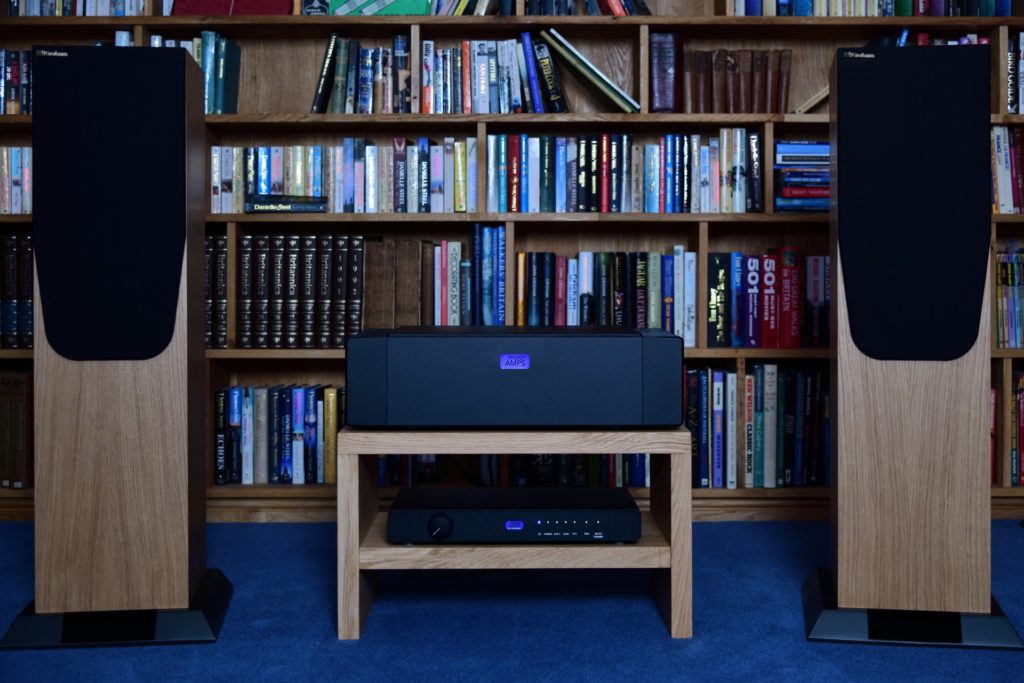The Angel amplifers were designed with a simple mission – music so real you close your eyes and they’re in the room playing to you.
It’s a simple sounding mission at one level, but it turned out to be a bit complex. To get there, an amplifier has to excel at a long list of different, sometimes contradictory, requirements.
Listening tests showed that low feedback amplifers are the most natural musically, but the control over the speaker a ‘muscle amp’ gives is equally important.
The 30 year design evolution process resulted in a broad spectrum of amplifier prototypes mostly along the lines of contemporary amplifier designs. They were test beds for discovering what really matters in an amplifier.
Many promising leads turned out to be blind alleys. Many proposed changes did not work in the conventional designs for a variety of interesting reasons.
Ultimately it took a return to a blank sheet of paper, and a new approach to power amplifier design using all the years of collected ideas and ideals to create the Angel amplifiers.
So what did we learn?
It is critical to the sound quality to make every single stage of the amplifier intrinsically very linear. This allows the amplifier to give a natural sound and tonality of instruments and vocals.
This gives the ‘close your eyes and they are playing in the room’ level of realism.
Extending the concept of intrinsic linearity so it applies at all power levels, even down to transient 2 ohm speaker loads, prevents the amplifier from compressing musical dynamics.
This allows the amplifier to convey the true range of musical expression. Drum beats have striking realism, an orchestra has its full scale and power, while quiet whispers remain truly quiet.
THD (Total Harmonic Distortion) is often quoted in amplifier specifications, with the number of zeros after the decimal point like some kind of holy grail. In real listening, as long as THD is low-ish, it’s just not relevant to the sound of the amplifier.
But designing an amplifier to achieve very low THD has an important side-effect – it tends to increase IMD (Intermodulation Distortion).
IMD is rarely quoted, but in our experience it kills music by muddying and blurring fine details, particularly when multiple instruments are playing at the same time.
The Angel amplifiers use very linear circuitry and low feedback to keep IMD very low. This leads to a wonderful transparency and neutrality, the music shines through and the amplifier ‘disappears’.
You can’t eliminate ALL distortion from an amplifier, so the key is not to measure it, but to listen to it, then remove the distortion you can hear.
It’s all about Current. Lots of it please!
Real loudspeakers are complex mechanical and reactive loads, and the only way to make a real speaker cone faithfully reproduce the music is to supply current from the amplifier.
But what about Linearity? Many amplifiers have high current limits, but transistors lose linearity as the currents increase. The Angel 6 addresses this by using 6 output transistors per channel to spread the current.
This means that when you crank up the music levels, the Angel amplifiers keep delivering more power and scale, without compressing the dynamics and ‘hardening up’ the sound like traditional amplifiers.
The level of grip this provides on the speakers is astonishing, and the timing and rhythm of the music remains natural, effortless and fluid.
To get the most from a low feedback amplifier design, the Angel amplifiers also use:
* A multi-island linear power supply to help deliver the full dynamic range of the music
* Low feedback discrete regulators for natural and neutral tonality
* Dual-Mono construction for channel isolation and imaging
* Top quality components for long life expectancy at low stress
* Custom low noise toroidal audio transformer with independent secondaries
* A low-resonance casing with heavy machined panels to reduce microphony and preserve transparency of fine musical nuances
Fundamentally the music is what drives all of our design decisions.
Ultimately, moving away from established and published amplifier design wisdom freed up the design process on the Angel amplifiers, allowing the music to come flowing out.
At Moor Amps we have re-imagined the amplifier and applied sound engineering design to produce the Angel amplifiers.
Effortless Musicality at any listening level.
Trust your ears to measure the difference, and prepare to rediscover your music collection.

